On June 7, President Donald Trump authorized an unprecedented deployment of U.S. soldiers to the streets of Los Angeles. Prior presidents have only resorted to such steps as a last resort in much more severe circumstances, partly because of strong American norms against the domestic use of the military. But it’s something that Trump has repeatedly threatened—and followed up on, in deploying soldiers to the southern border and Washington, D.C., during his first term, leading many to worry that Los Angeles is a sign of more things to come.
The instigating event for Trump’s decision appears to have been reports that protesters in Los Angeles interfered with Immigration and Customs Enforcement (ICE) personnel attempting to execute immigration raids and surrounded the city’s federal building, prompting intervention by federal and state riot control personnel. On June 7, Trump issued a presidential memorandum that responded in part to these events, stating:
... I hereby call into Federal service members and units of the National Guard...to temporarily protect ICE and other United States Government personnel who are performing Federal functions, including the enforcement of Federal law, and to protect Federal property, at locations where protests against these functions are occurring or are likely to occur based on current threat assessments and planned operations.
Within days, Defense Department officials indicated the administration would be calling up 4,000 members of the California National Guard and deploying 700 active duty Marines to Los Angeles for 60 days pursuant to the president’s orders. Moreover, it would be doing so over the objections of California Governor Gavin Newsom, who vocally opposed the military deployment as “unnecessary and counterproductive.”
At Newsom’s direction, the state of California soon filed a lawsuit seeking to stop the Trump administration’s actions. A federal district court judge granted their request for a temporary restraining order and directed that California’s National Guard personnel be returned to Newsom’s control while the litigation was ongoing. But his order was quickly stayed following an emergency appeal by the government, leaving the Trump administration free to continue using the military while California’s legal challenge is litigated.
This article situates Trump’s decision within the broader legal and related political context surrounding domestic military deployments in the United States. In some ways, Trump’s actions in Los Angeles are a less dramatic step than both Trump and his critics have portrayed them. But by inching closer to the use of the military against Americans, his decision may yet prove to be a seminal moment for the trajectory of American democracy.
Domestic military deployments have been a point of controversy in the United States since the nation’s founding. Experiences under British colonialism made the authors of the U.S. Constitution wary of domestic uses of the military. But having recently lived through disturbances like Shays’ Rebellion, some also believed that it might sometimes be necessary. As a result, the Constitution neither authorizes nor prohibits domestic deployments. Instead, it makes Congress responsible for “calling forth the Militia to execute the Laws of the Union, suppress Insurrections and repel Invasions[,]” effectively delegating to the legislature—not the president in his capacity as “commander in chief”—the task of determining when the domestic use of the military would be an appropriate response to such extraordinary circumstances.
Today, the old militia system has been replaced by a standing military and state-based national guard whose members are dual-enlisted and can be federalized into the standing military under conditions set by Congress. But the logic of the Calling Forth Clause still applies, giving Congress the ultimate authority over when and how the military may be used on American soil.
Congress has used this authority to install one major limitation in the form of the 1878 Posse Comitatus Act. The Act makes it a crime for anyone to willfully use members of the standing military “as a posse comitatus”—a Latin phrase that describes individuals being called upon to assist in law enforcement—”or otherwise to execute the laws[,]” except where “expressly authorized by the Constitution or Act of Congress[.]” While case law on what exactly this means has been sparse, the Justice Department (including during Trump’s first term) has long understood it to bar federal military personnel (but not national guard personnel still under the command of their state’s governor) from “subjecting civilians to military regulation, directly or actively participating in civilian law enforcement activities, or pervading the activities of civilian law enforcement.”
Yet Congress also hasn’t been shy about installing exceptions. The most well-known are in the Insurrection Act, a notorious and rarely used law that authorizes the president to use the military to suppress insurrections, enforce otherwise unenforceable federal laws, and for certain other extraordinary purposes. But other exceptions exist as well. And the Defense Department has occasionally suggested that the Constitution gives the president authority to act beyond posse comitatus restrictions where necessary for “homeland defense” and select other purposes.
As the Justice Department once described, “the use of military force to execute the laws has traditionally been regarded with disfavor—as a course of action that can be lawfully and properly pursued only as a last resort.” But the legal parameters established by Congress and asserted by the executive branch have not always been as narrow as these traditions might suggest. The gap between the two is precisely where the Trump administration has chosen to operate in deploying U.S. troops to California.
Despite some initial reports to the contrary, President Trump did not invoke the Insurrection Act in deploying troops to Los Angeles. Instead, his June 7 memorandum took two separate legal steps using less well-known legal authorities.
First, it called up and federalized California National Guard personnel, removing them from California Governor Gavin Newsom’s control and placing them under his own. To do so, he relied on a little-known statutory provision codified at 10 U.S.C. § 12406 that allows the president to call National Guard personnel into federal service in the event of an invasion or rebellion or if he is “unable with the regular forces” to execute federal law. In related litigation, the Justice Department has argued that the targeting of ICE personnel and federal facilities by protestors satisfies the latter two of these requirements. It has also maintained that the president’s determinations in this regard are entitled to substantial deference by the courts, if they are not outright unreviewable.
Section 12406 also indicates that “[o]rders for these purposes shall be issued through the governors of the states.” While some have suggested that this might provide Governor Newsom a veto on National Guard deployments under this statute, that seems unlikely given the mandatory nature of the provision. That said, it is a clear (if ambiguously worded) procedural requirement that could provide separate grounds for concluding that the Trump administration did not comply with section 12406’s requirements. For its part, the Trump administration maintains that it satisfied this requirement by routing its order calling up the California guardsmen through the state National Guard’s adjutant general, who is empowered to issue such orders “in the name of the Governor” under state laws and regulations.
Second, the presidential memorandum directed both the federalized California National Guard and active duty military personnel—specifically Marines who, as members of the standing military, were already under federal control and did not need to be called into federal service through section 12406—to protect ICE personnel and federal facilities from protestors. In doing so, the Trump administration does not appear to be relying on any statutory authority. While it does not describe it as such in its briefing, the Trump administration is instead relying on a theory of implied presidential authority generally referred to as the “protective power”.
Loosely rooted in Supreme Court precedents dating back to the late 19th century (and executive branch practice going back half a century further), the protective power posits that the president has the implied constitutional and statutory authority as commander in chief to use the military to defend federal personnel and property from serious disruption or destruction. Otherwise, such actions would make it impossible for him to meet his constitutional duty to “take Care that the Law be faithfully executed” or enforce the laws enacted by Congress. During the Vietnam War, the Justice Department leaned on this theory to authorize the use of troops to defend federal facilities, federal personnel, and foreign embassies from protester-related disruptions in situations where other federal, state, and local resources were determined to be inadequate (a finding that, in the context of Los Angeles, remains contested). As these actions were protective in nature and not intended to enforce federal law, the Justice Department argued that they did not run afoul of the Posse Comitatus Act. Legal scholars, however, have questioned how viable broad theories of the protective power remain today, in light of subsequent congressional enactments regarding the protection of federal personnel and property as well as a broader shift in the courts away from theories of implied authority.
This protective purpose has clearly informed how the Trump administration is using federal troops on the ground in Los Angeles. According to media reports, these soldiers have secured federal facilities, established a defensive perimeter around ICE personnel engaging in law enforcement activities, and even detained individuals who sought to disrupt those activities. But they have thus far avoided conducting arrests or pursuing other law enforcement activities on their own. Whether these limits will hold, however, remains to be seen—and if it goes beyond them, the Trump administration will need to find another legal basis for the deployment or may yet open up more avenues for legal challenges by California and other affected parties.
The state of California filed a legal challenge to Trump’s decisions in federal district court in northern California on June 9 and almost immediately requested a temporary restraining order (TRO) pausing the Trump administration’s actions pending the resolution of the dispute. The state argued that the circumstances on the ground in Los Angeles did not satisfy the requirements of 10 U.S.C. § 12406 as the protests did not constitute a “rebellion” and federal officials were still able to enforce federal law without military assistance, in part because existing federal and state law enforcement resources were more than adequate to protect federal personnel and facilities. It also asserted that the Trump administration had failed to satisfy section 12406’s procedural requirement that orders be issued through the governor. Finally, while it did not contest the protective power theory directly, the state argued that the Trump administration’s use of the military in such close proximity to law enforcement both violates the Posse Comitatus Act and intrudes upon the authority preserved for the states by the Tenth Amendment.
On June 12, federal district court Judge Charles Breyer—the brother of Justice Stephen Breyer—ruled in California’s favor and issued its requested TRO. That said, his order focused narrowly on the Trump administration’s invocation of 10 U.S.C. § 12406, as he concluded that the Trump administration had failed to meet either its substantive or procedural requirements and, in doing so, violated California’s Tenth Amendment rights. He notably did not reach the question of the Posse Comitatus Act or squarely address actions by active-duty Marines, whose deployment is not reliant on section 12406. As a result, the TRO enjoined the Trump administration from using California National Guard personnel and directed them to return control to the state but held other issues for consideration alongside the plaintiffs’ motion for a longer-term preliminary injunction, which is still being litigated.
The Trump administration almost immediately sought an emergency stay pending appeal of the TRO to the U.S. Court of Appeals for the Ninth Circuit, where a three-judge panel (two of whom Trump appointed in his first term) soon issued a temporary administrative stay pending its review, allowing the Trump administration’s actions to continue. The panel heard oral argument on the government’s motion to permanently stay the district court’s TRO on June 17 and, two days later, ruled in the Trump administration’s favor. The panel agreed with the district court that it could review the president’s compliance with the prerequisites for invoking section 12406 but ultimately found that his findings are entitled to substantial deference under longstanding case law from the related Insurrection Act context. Based on this standard, it concluded that the president’s findings authorizing the L.A. deployment were sufficiently credible to make the district court’s TRO inappropriate. It also concluded that the Trump administration’s compliance with section 12406’s procedural requirement was likely sufficient and that, even if not, the proper remedy was a directive to correct the procedural error by coordinating through the governor’s office, not invalidating the deployment as Judge Breyer’s TRO had done.
Meanwhile, the district court has continued to solicit briefings on California’s motion for a longer-term preliminary injunction that would include actions by the Marines and the Trump administration’s invocation of the protective power, including at a hearing on June 20. Any decision it issues will in turn be subject to appeal to the Ninth Circuit and potentially the Supreme Court.
There is no guarantee that there will ever be a final court ruling on the Trump administration’s decision. As protests in L.A. appear to have wound down, the Trump administration—particularly if it suffers further defeats in the courts—may end its deployment early, rendering further litigation moot.
Even if Trump’s invocation of 10 U.S.C. § 12406 and the protective power are invalidated, this won’t necessarily mean the end of the Trump administration’s efforts to use the military to enforce immigration law. Trump himself has staked out much more aggressive claims of constitutional authority to pursue such action that he has yet to rely on. For future immigration enforcement efforts, the Trump administration may use other authorities to solicit voluntary assistance from National Guard soldiers from friendly states’ governors, as it did in Washington, D.C., in 2020. Or it may further expand its existing efforts to effectively deputize state National Guard personnel for immigration enforcement through what are called section 287(g) agreements. In short, if he wants them, Trump will have other bites at the apple.
Nor are legal challenges likely to end if the courts ultimately vindicate what Trump has done. As the protective power that the Trump administration is relying upon traditionally only authorizes a narrow band of activity with a close nexus to the protection of federal personnel and property, the state of California and other interested parties are almost certain to closely scrutinize how the Trump administration uses soldiers on the ground and pursue litigation where they overstep. Moreover, soldiers deployed within the United States are subject to all of the same constitutional and statutory restrictions as other federal personnel, plus a few more installed by Congress. If they violate these restrictions, then either they or the executive branch may find themselves liable for damages or worse, and the Trump administration may end up paying the political costs.
These risks, moreover, are quite real. Most soldiers are trained to operate against enemy soldiers on foreign battlefields, not against Americans with a full panoply of constitutional rights. Past domestic deployments have often resulted in dangerous, embarrassing, or tragic incidents, including some wherein civilians lost their lives. The more the Trump administration puts U.S. soldiers in a position where they have to confront American civilians, the more likely such incidents become.
It’s also unclear whether the use of soldiers will ultimately help the Trump administration advance its immigration agenda. The implicit logic of Trump’s order is that the presence of U.S. soldiers will deter protesters from interfering in DHS law enforcement activities. But as the state of California has argued in court, the controversial nature of domestic military deployments could instead lead protesters to escalate in their opposition to the Trump administration’s efforts. (Then again, some have argued that this is exactly what the Trump administration wants, so as to better justify an eventual invocation of the Insurrection Act.)
Domestic deployments are also costly, both financially and otherwise. The current 60-day L.A. deployment is projected to cost the military $134 million, a substantial expense that Congress almost certainly did not anticipate being spent on immigration enforcement. Moreover, National Guard personnel who are called up to federal duty are kept away from their families and civilian lives in ways that can prove quite disruptive. And active-duty personnel assigned to assist law enforcement lose time and resources they could be using to prepare for the sorts of national security threats that are more traditionally in the military’s bailiwick.
These sorts of prudential considerations are what have stopped prior presidents from resorting to the domestic use of the military, except as a last resort. But thus far, they haven’t stopped Trump. To the contrary, on June 17, the Defense Department announced that 700 additional active-duty soldiers would be sent to provide “logistical support” for “the processing of illegal aliens at ICE detention facilities” in Florida, Louisiana, and Texas. This is a different mission than the one authorized by Trump’s June 7 memorandum, which doesn’t raise the same challenging legal questions. But it’s another indicator of the Trump administration’s determination to lean on the military to advance its immigration agenda—meaning domestic deployments are likely to become a greater part of Americans’ lives in the years to come.
This article was made possible in part by a grant from the Carnegie Corporation of New York. The statements made and views expressed are solely the responsibility of the author.
The Brookings Institution is committed to quality, independence, and impact.
We are supported by a diverse array of funders. In line with our values and policies, each Brookings publication represents the sole views of its author(s).
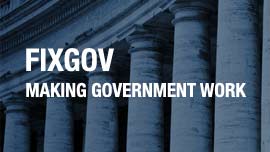
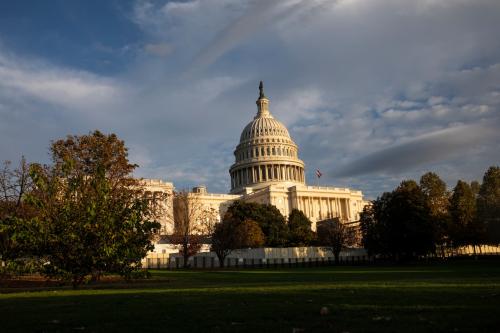
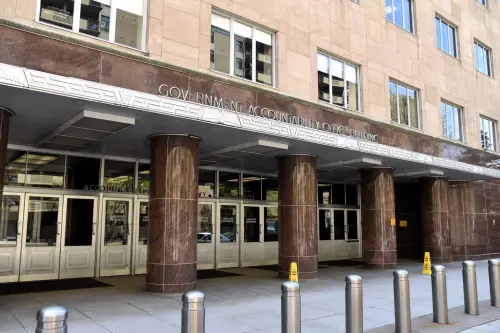
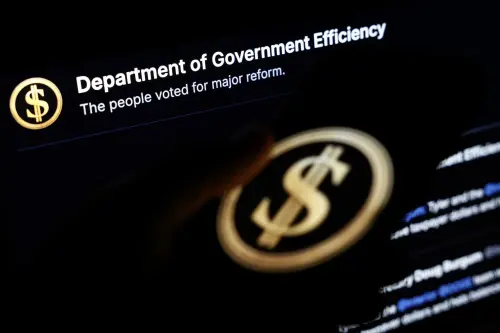

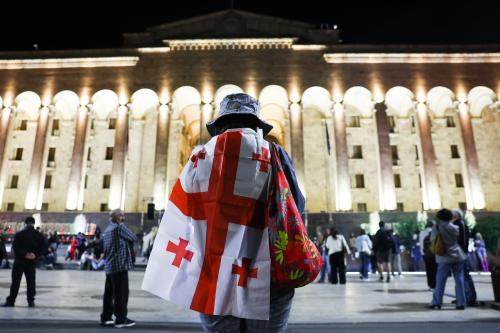
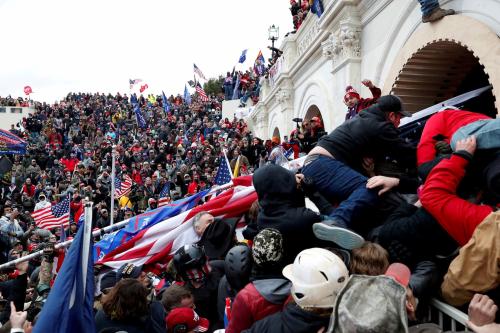
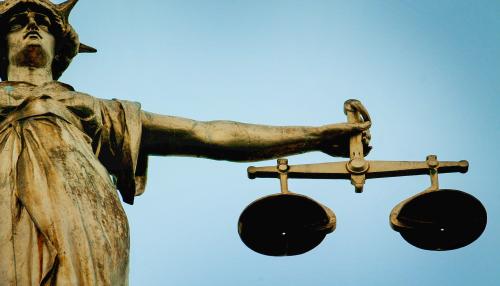
Commentary
How can the president put soldiers on the streets of Los Angeles?
June 26, 2025